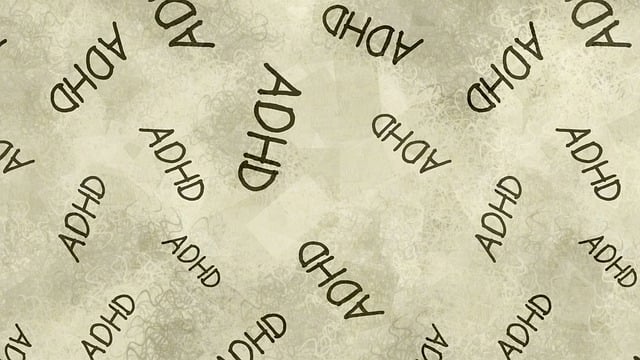Boulder Domestic Violence Therapy (BDVT) offers specialized care for victims of intimate partner violence, focusing on healing and mental wellness through therapy and community outreach. They identify at-risk populations using data analysis to tailor programs like stress management workshops for young adults in suburban areas. By understanding demographic needs and building trust, BDVT empowers individuals with healthy coping mechanisms and fosters a culture of safety. Measuring both immediate crisis support and long-term resilience development, BDVT contributes to Boulder's Mental Health Policy efforts, enhancing overall well-being by breaking cycles of violence.
Boulder Domestic Violence Therapy has pioneered community outreach programs, offering vital support to at-risk individuals. This article explores the comprehensive process of implementing successful outreach initiatives. From understanding the target demographics to designing tailored strategies and managing logistics, each step is crucial in making a lasting impact. We’ll guide you through identifying vulnerable communities, creating effective campaigns, and measuring success to ensure these programs thrive and drive positive change.
- Understanding Boulder Domestic Violence Therapy and Community Outreach
- Identifying Target Communities for Outreach Programs
- Designing Effective Outreach Strategies
- Implementing the Outreach Program: Logistics and Best Practices
- Measuring Success and Ensuring Long-Term Impact
Understanding Boulder Domestic Violence Therapy and Community Outreach

In Boulder, Boulder Domestic Violence Therapy (BDVT) stands as a beacon of hope and support for victims of domestic violence. This therapy focuses on providing specialized care tailored to address the unique challenges faced by individuals and families dealing with intimate partner violence. Through various therapeutic approaches, BDVT offers not just short-term relief but also long-lasting solutions that promote healing and enhance mental wellness. The therapy program is meticulously designed to build resilience, helping clients overcome trauma and regain control of their lives.
Community outreach is a crucial aspect of BDVT’s strategy. By extending services beyond the therapy room, they aim to create a safe and supportive environment throughout the community. This involves developing Mental Wellness Coaching Programs that empower individuals with coping mechanisms for stress, anxiety, and depression—common issues stemming from traumatic experiences. Moreover, these programs contribute to overall anxiety relief and promote a culture of resilience, ensuring that residents in Boulder can navigate life’s challenges with greater ease.
Identifying Target Communities for Outreach Programs

Identifying target communities for outreach programs is a strategic step in ensuring effective community engagement. Organizations like Boulder Domestic Violence Therapy can tailor their efforts to address specific needs by focusing on at-risk populations. These may include low-income neighborhoods, areas with high rates of domestic violence, or communities lacking access to mental health resources. By conducting thorough research and analyzing data, such as demographics, existing social services, and local needs assessments, organizations can pinpoint the most effective places to implement outreach initiatives.
For instance, a Mental Health Policy Analysis and Advocacy group might target young adults in suburban areas experiencing high levels of stress management issues due to academic pressures and transitioning into adulthood. Utilizing Conflict Resolution Techniques could be particularly beneficial for these individuals, fostering healthier communication and coping strategies. Customizing the outreach approach based on identified needs ensures that resources are allocated efficiently, maximizing the positive impact on targeted communities.
Designing Effective Outreach Strategies

Outreach strategies are a cornerstone of successful community programs, especially those focusing on sensitive issues like domestic violence. For organizations like Boulder Domestic Violence Therapy, engaging the community requires a tailored and thoughtful approach. The first step is to understand the target audience’s needs and preferences. This involves researching demographic data, identifying at-risk groups, and listening to community feedback. By doing so, programs can design relevant messages that resonate with individuals facing domestic violence or those who may be susceptible to burnout due to their support roles.
Effective strategies also emphasize building trust and fostering positive relationships. Encouraging open dialogue through educational workshops, support groups, and one-on-one counseling sessions helps break down barriers and encourages participants to develop coping skills. Promoting positive thinking and stress management techniques can significantly contribute to burnout prevention. These initiatives ensure that the community feels empowered, supported, and ready to face challenges like domestic violence, ultimately leading to a healthier and more resilient social fabric.
Implementing the Outreach Program: Logistics and Best Practices

Implementing a community outreach program requires careful planning and coordination to ensure its success. At Boulder Domestic Violence Therapy, we understand that reaching vulnerable populations often involves navigating complex logistics. The first step is identifying the target audience and understanding their unique needs and barriers to accessing services. This might include collaborating with local schools, community centers, or faith-based organizations to gain insights and build trust. Once the target group is defined, creating a tailored strategy becomes essential.
Best practices emphasize the importance of communication strategies that foster cultural sensitivity in mental healthcare practice. Engaging and educating community members through workshops, awareness campaigns, and peer support groups can be powerful tools. For instance, incorporating Burnout Prevention Strategies for Healthcare Providers into outreach initiatives ensures that those offering assistance are well-equipped to handle their own well-being and sustain long-term impact. Effective logistics also involve establishing clear communication channels and assessing the program’s effectiveness through regular feedback mechanisms.
Measuring Success and Ensuring Long-Term Impact

Measuring success and ensuring long-term impact are vital components of any community outreach program, especially those focused on sensitive issues like domestic violence. Organizations like Boulder Domestic Violence Therapy understand that immediate outcomes, such as providing emergency shelter or crisis counseling, are essential, but they also strive for deeper, lasting effects. This involves tracking participants’ progress in building resilience and developing coping skills, which can be measured through follow-up interviews, participation rates in subsequent programs, and community feedback.
By integrating these metrics into their strategies, Boulder Domestic Violence Therapy contributes not only to the immediate needs of individuals but also to a broader Mental Health Policy Analysis and Advocacy effort. This holistic approach ensures that outreach programs have a lasting impact on communities, fostering environments where resilience thrives and individuals are empowered to break cycles of violence, ultimately enhancing overall mental health and well-being.
Boulder Domestic Violence Therapy’s community outreach programs have the potential to create lasting change. By carefully identifying target communities, designing tailored strategies, and implementing best practices, we can ensure our services reach those who need them most. Measuring success involves tracking key metrics and fostering long-term impact through sustained engagement. Through collaborative efforts and a data-driven approach, Boulder Domestic Violence Therapy can revolutionize support systems for victims and survivors, creating a safer, more supportive community for all.














